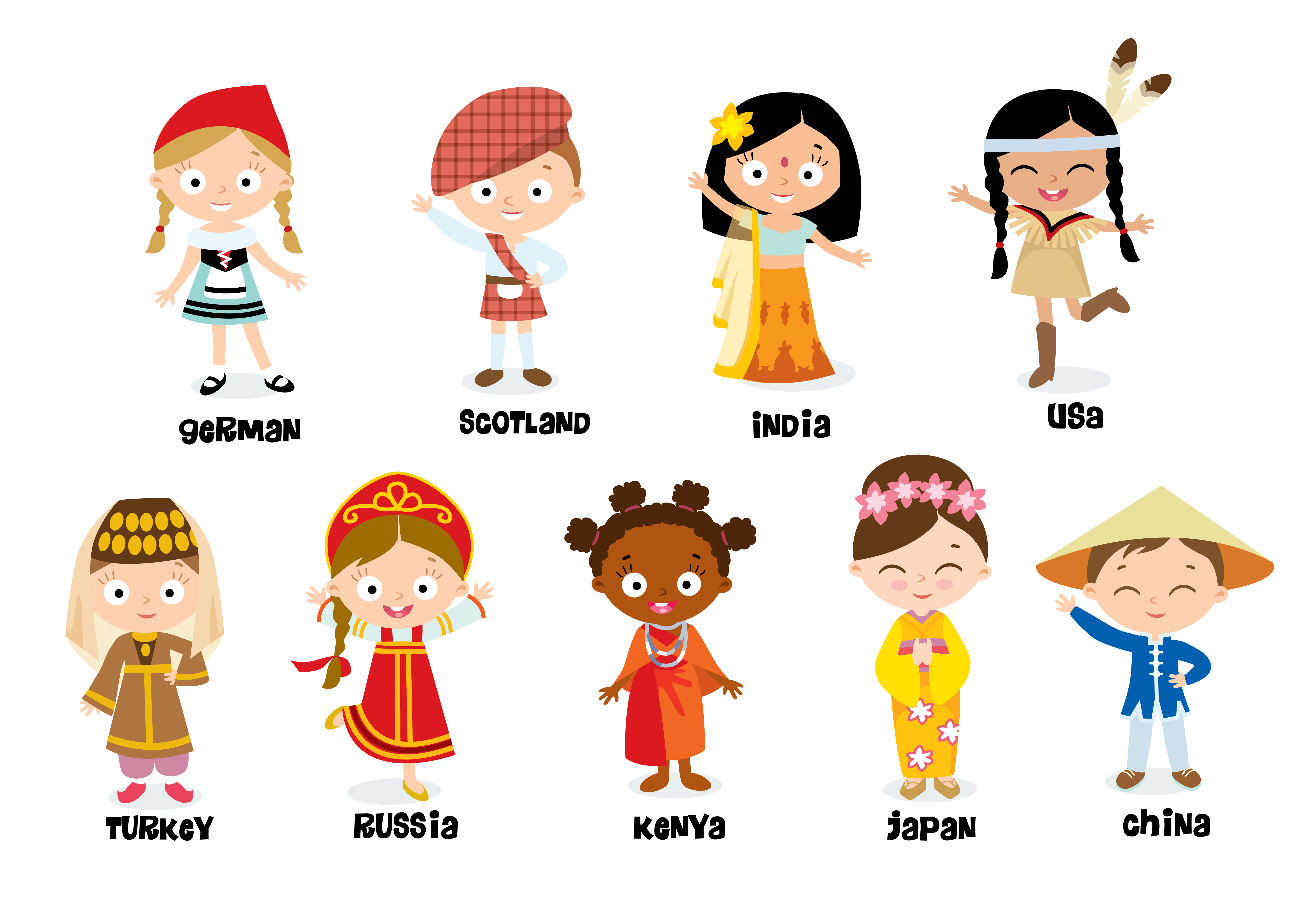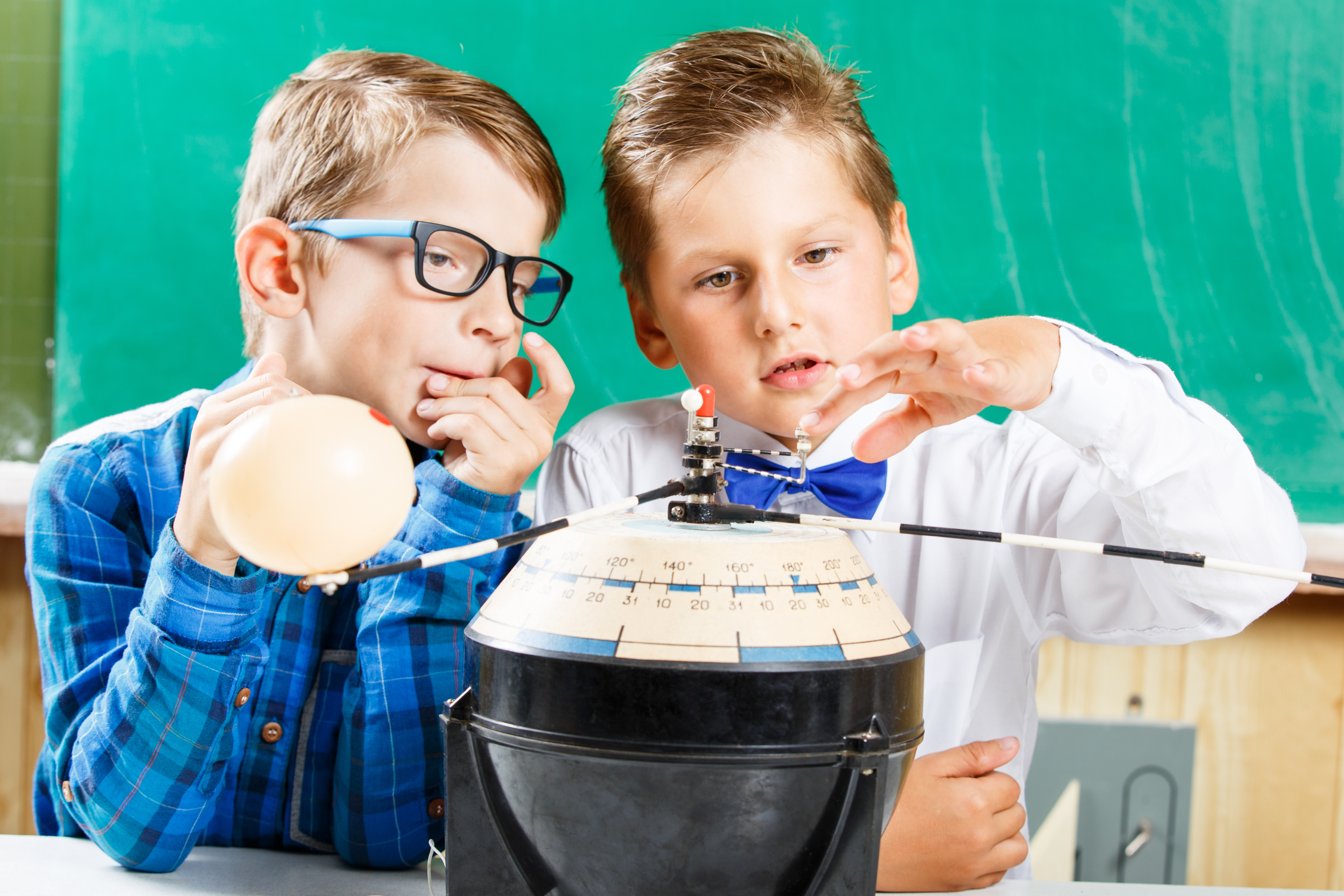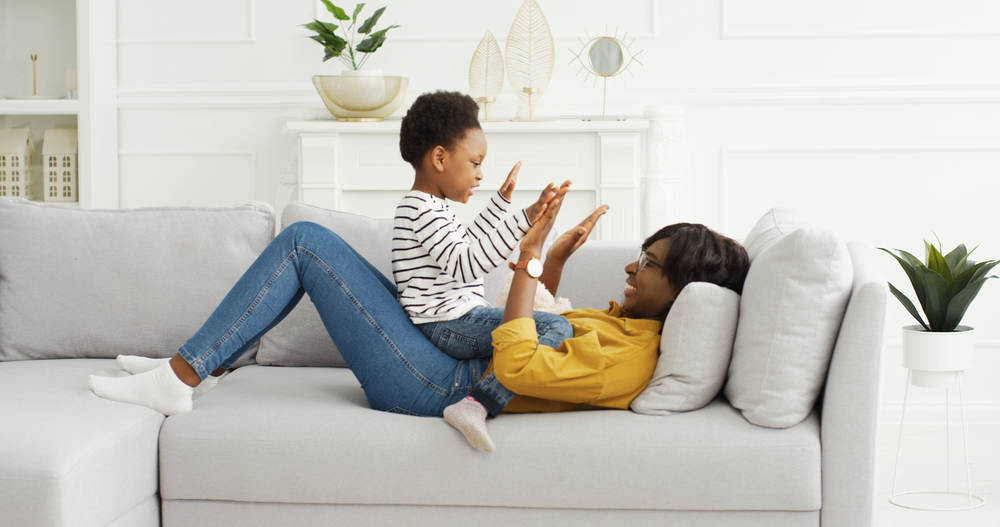The Power of Play: What Is Play-Based Learning?
Dec. 6, 2023
It’s no secret that play is an incredibly important part of a child’s early life. Even from birth, newborns enjoy simple games such as peek-a-boo, or interactive songs that parents sing, such as Itsy-Bitsy Spider. As adults, it can be easy to dismiss such games as mere entertainment; after all, the popular expression “child’s play” was coined to describe something overly simplistic or insignificant. However, parents, teachers, and caregivers must always remember that a child’s play isn’t a frivolous way to pass the time. In fact, play is arguably the most important activity kids engage in, from birth to pre-adolescence.
According to Project Zero, a group of researchers from the Harvard Graduate School of Education, children learn a multitude of integral life skills through play, like how to collaborate with others, the negotiation of rules, and how navigate relationships with friends, family, and classmates. Play forces children to solve problems and be flexible as they learn to interact and communicate with others through their games.
For infants and toddlers, play-based learning helps the littlest of learners to make sense of the world around them. The world is a big place that can sometimes be a little scary but play serves as a fun way to gain knowledge about the people in their lives and the basic ways in which the world works. Infants begin to construct knowledge about their surroundings, while toddlers thrive thanks to hands-on learning and experimentation.
Learning through play continues to be important for preschoolers, especially as they gain more exposure to peers through family friends, daycare centers, and early learning preschool programs. It serves as a gateway to numerous developmental milestones by helping them enhance their language skills and articulate their thoughts while engaging in pretend scenarios. More importantly, play becomes a way for kids to practice emotional regulation. This allows them to navigate complex feelings, develop empathy, and practice conflict resolution within a safe and supportive space.
Even beyond preschool, play serves as a critical way for older kids to develop the social skills they will take with them throughout their lives. Through play, they learn cooperation, negotiation, and teamwork, laying the groundwork for healthy relationships and effective communication as they make friends in school and beyond.
In essence, play-based learning serves as a cornerstone in early childhood education, with experts touting its benefits and importance. It is no doubt an essential component of childhood, but as a parent or teacher, you may be wondering about the details of how play can develop your child’s specific academic skills or how to know if the games they play are useful. Join us as we explore answers to the most commonly asked questions about play-based learning to gain deeper insight into this important topic.
Digging Deeper: What Can Play-Based Learning Do for My Child?
Play can seem like an effortless part of childhood, with kids engaging in games even with little adult intervention. However, to maximize their learning, parents and teachers need to put some thought into what and how they play. Below are some of the most frequently asked questions when it comes to play-based learning:
Why is play-based learning important?
We’ve already addressed the general ways in which play benefits kids of all ages, such as by sparking creativity, and curiosity, and improving social relationships and emotional regulation. More specifically, play-based learning can even help young learners develop the following academic skills:
- Math: Playing with manipulatives, such as toys, blocks, or everyday objects, children can count, sort, and group items, which in turn helps them to build a foundation for early math skills and numeracy. This hands-on approach helps kids to grasp basic math concepts like addition, subtraction, multiplication, and division.
Furthermore, board games and puzzles introduce mathematical concepts in a fun and motivating way. These types of activities encourage children to strategize, count, and problem-solve. For older kids, shape puzzles, such as tangrams, help kids develop spatial awareness and reinforce important geometric concepts.
Lastly, cooking in a pretend kitchen, setting up a pretend store, or playing cashier often involves counting money, measuring ingredients, and practicing the basic concepts of quantity and measurement, which directly builds specific math skills they will need for school and life.
- Science: The many ways that play helps children build science knowledge and skills are practically endless! For babies and toddlers, sensory activities are incredibly important to development. Sensory play introduces basic scientific concepts such as cause and effect, properties of matter, and how matter changes when manipulated. This includes experimenting with a variety of textures, such as exploring water, sand, slime, shaving cream, and anything and everything in between! Busy boards, such as those with various types of latches, buttons, and knobs can help children understand how different objects work.
For preschoolers and older kids, hands-on experiments teach them to observe, ask questions, make predictions, and come to conclusions, all of which are fundamental aspects of the scientific method. Furthermore, when children explore the outdoors, they make firsthand observations about plants, animals, and insects, which helps them learn more about their natural surroundings.
- Social Studies: It’s well-known that kids love to play pretend! Role-playing games are especially important for building social studies concepts since kids can immerse themselves in various roles, such as pretending to be community helpers, historical figures, or people from different cultures. This type of play can help little learners to differentiate between the different types of governments, such as the difference between leaders within their community, and those they see on the TV, like governors and the president. Additionally, role play can also teach young learners about different people and their cultures, as well as their unique perspectives.
- English Language Arts (ELA): Storytelling and acting out plays with puppets are classic kid games that develop critical early reading and language skills. Encouraging storytelling, puppet shows, or role-playing scenarios helps older children develop narrative skills, and expand vocabulary, all while enhancing the imagination and sparking their curiosity.
Moreover, for early learners, playing games, puzzles, or activities that involve letters and their sounds helps them to grasp phonemic awareness and letter recognition interactively and enjoyably. This type of play builds a child’s language skills, getting them ready for reading and advancing their vocabulary.
Just how effective is play-based learning?
A commonly misunderstood concept amongst parents is that once children begin kindergarten, play is something that is done at home and that school is for learning. While most educators likely know better, sometimes curriculum writers at the state and district levels indeed devalue the importance of play in the interest of ensuring that students hit specified learning standards or targets. This can put teachers in a difficult place when lesson planning since enforcing a demanding curriculum at such a young age stifles creativity and minimizes opportunities for authentic play-based learning.
Unfortunately, one reason state education agencies are constantly revising and updating learning standards and making them ever more rigorous is due to requirements for state testing, with most states requiring testing beginning with the third grade. While this may seem like children still have plenty of time for play from kindergarten through the second grade, the truth is that early elementary teachers have the monumental task of teaching the fundamental basics that kids must master to be successful in every subsequent year of schooling. This includes concepts like phonics, reading, writing, and numeracy just to name a few. Without these foundational skills, children cannot succeed in the third grade or its testing as these concepts take years to develop.
All this considered, it is easy to see how play in the classroom can seem like a frivolous activity only meant for entertainment or keeping kids motivated. However, studies have recently shown that play-based activities are more effective than other methods of teaching. In fact, according to the Regional Educational Laboratory Program (REL), a program that is a part of the Institute of Education Sciences and a branch within the U.S. Department of Education, “for children younger than eight, guided play was more effective for teaching academic content than direct instruction” (2022). This means that even though teachers often turn to direct instruction to meet a plethora of learning targets, allowing their students time for guided play is much more effective, and can improve student learning and outcomes.
So why don’t more teachers do exactly that? In short, the answers are time and the pressure to ensure that all kids meet specific goals by the end of each school year. For example, this 2016 article by the National Education Association (NEA), discusses how kindergarten teachers throughout the nation were being pressured to teach their students to read by the end of the year, even though that goal is developmentally inappropriate. Thanks to initiatives, such as former President George W. Bush’s No Child Left Behind Act, schools were pressured for many years to increase academic rigor and push down those heightened standards to lower grades where much of those learning targets are inappropriate.
What are the specific benefits of play-based learning for babies and toddlers?
We’ve already discussed above the general idea that play is important in early development to help the youngest of learners to make sense of the world around them. More specifically, it allows their brains to develop naturally while assisting them in important areas, such as emotional regulation. This helps children to become resilient and well-adjusted as they grow older.
Researchers have delved deeper into the science of play-based learning in the development of not only humans but also all mammals. They found humans, just like other mammals, have an innate need to engage in play activities as a part of their healthy and successful development. During play, human children experiment with scenarios while playing with toys; in doing so, they make observations and form new neural networks within the brain to solidify what they’ve learned. Playing activates areas of the young brain, forging new connections while releasing important hormones that make playful activities enjoyable. Thus, not only is play exciting for kids, but it also allows them the opportunity to make a healthy connection between learning and fun.
Moreover, play could help the youngest learners to form emotional resilience and empathy and improve outcomes for kids who grow up in an environment that encourages free and guided playtime. For instance, in a study by Dr. Stuart Brown with the Institute for Play, researchers found that prisoners incarcerated in Texas’s Huntsville Unit were more likely to have been deprived of play early in life, having grown up in toxic environments that did not include free play.
When we think about the consequences of depriving play, it does make sense; the littlest of learners are busy learning the rules of interaction and communication with others. They do this through playing with their parents, family members friends, and caregivers. Moreover, toddlers play with peers as soon as they can sit, crawl, and walk. If young children are not engaged in simple play with others, they cannot learn the rules of engaging with others. Through playful activities, they learn to communicate, build empathy for others, and develop resilience when things don’t go their way.
What are the specific benefits of play-based learning in preschool?
Preschool is where play-based learning branches off into different types because these children are often enrolled in early learning programs at daycare facilities or participate in preschool programs. Most of what was described above for babies and toddlers referenced what is known as free play. This is a play that is child-directed and completely flexible. While parents or caregivers may engage infants and toddlers with interactive songs, much of their play is on the ground, interacting with toys, peers, pets, and parents all while being voluntary and child-led.
Guided play is different in that teachers and caregivers have a more active role in encouraging the play and can vary in how guided or free it turns out. This type of play is incorporated into preschool curriculums and gives teachers more control over when and how kids play throughout their class.
Guided play takes many forms, including leading children into inquiry through experiments, or allowing for time to play with pretend kitchen sets, cash registers, play money, and puzzles to advance a specific topic, goal, or concept within the timeframe of that class.
The benefits of such guided play are many; according to the REL article mentioned earlier, the most effective manner of teaching preschoolers includes embedded periods of play with short spurts of direct instruction to connect ideas from play to what they learned in class. Consequently, play-based learning assists preschoolers in learning specific social and academic skills and concepts.
What are the benefits of play-based learning for kindergarteners and beyond?
Even as elementary students enter kindergarten and advance through their primary years of schooling, play continues to play an integral role in their learning. Turning once again to the article by The Hetchinger Report, research shows that the ability to learn from watching videos and through direct teacher lectures tends to develop later as kids grow older. Instead, young children learn from experience rather than through listening. Likewise, research has long shown that kids have much shorter attention spans than adults, usually with only the ability to listen and stay focused for about two to three minutes per year of their age. For a kindergartener who is five years old, this equates to only 10-15 minutes before that student shuts down!
Play-based learning remains the most effective way for school-aged kids to learn and can take many more forms, such as through more complex games, imaginative play, puzzles, or through guided play that tasks kids with solving problems.
As for specific benefits for this age group, play-based learning can positively impact a child’s:
- Imagination and creativity
- Literacy and language skills
- Social and emotional skills
- Fine and gross motor skills
- Confidence and self-esteem
Similarly, it is widely accepted that kids who participate in youth sports benefit in many of the same ways that are mentioned above. That’s because when children play a team sport, they are doing exactly what we have been talking about all along: playing a game and connecting play with learning. Through sports, players build confidence, form relationships with peers and coaches, and communicate with one another to be successful in the game.
Play in the classroom and at home, whether it’s with peers or individually, allows children to practice and learn the same skills in almost the same way. Because kids learn through experience, they continue to learn regardless of the type of play in which they engage.
Are there any disadvantages to play-based learning?
Of course, the adage that nothing in life is perfect rings true, even with something as beneficial as play-based learning. The biggest disadvantage to play-based learning isn’t play itself but has to do with its structure—or lack thereof.
The first issue that can arise is that children are exposed to too much free play without any guidance whatsoever. Don’t get us wrong; opportunities for unstructured free play are vitally important to a child’s growth and development. However, as with anything else, too much of a good thing is not necessarily beneficial.
In fact, there is an entire movement related to the idea of allowing young children to learn entirely through unstructured play and exploration called unschooling. Due to its unstructured nature, unschooling varies wildly amongst families who practice it with their kids. As a result, there is limited research and data to prove that it is effective.
Even so, it is plausible to suggest that a curriculum with too much unstructured play can result in unfavorable outcomes due to the research we do have that suggests that guided play that connects play with lessons and learning objectives is highly effective for school-aged children, especially as they grow older. In that way, it can be stated that too much unstructured free play may not be beneficial and that growing kids may fall below the accepted grade level.
On the other side of the spectrum, too much structure could morph play-based learning into something that is more like hard work and less like play. With too much guidance, teachers or parents can unwittingly zap the fun out of learning by placing more emphasis on difficult skills than on exploration, creativity, and play.
Essentially, play-based learning activities should be balanced to provide learners with guided learning experiences that still allow for freedom to explore their creativity and imagination. Sometimes free play is important and necessary, especially while at home, while guided learning activities can weave fun, playful experiences into brief lessons that can help to solidify their learning.
How can parents implement play-based learning at home?
As a parent, you may be wondering what you can do to support play-based learning while the kids are at home and away from school or daycare. To get started, try the following:
- Plan in chunks of time throughout the day that are dedicated to play. It often seems that life has never been busier than it is now, especially with an ever-growing list of things to do, such as work, shopping, traveling, hobbies, and classes taking up so much of our time! Even so, it’s important to make time to allow kiddos to play throughout the day, every day.
- Decide which chunks of time will be dedicated to free play, and those in which you can join! Go ahead, sit down, and put your feet up! What do you notice? More than likely, your child has started to play on their own, perhaps with toys, or maybe by constructing a pretend game. Allowing kids to play on their own is essential to their development as is giving yourself a breather is essential to your well-being. When carving out chunks of time dedicated to play, plan ahead to determine which will be independent play, and when you can get down on the floor and play with them at their level. When you do, let your child direct the play, but feel free to make suggestions or find ways to connect their play to something they may be learning at the moment.
- Minimize distractions by turning off the TV and electronics. There’s no doubt that electronics, especially when considering learning apps and games, can complement a child’s early education. However, screens should not be a substitute for hands-on play, and turning them off is an important step when engaging in a hands-on activity.
- When engaging in guided play with your child, ask questions about what they’re doing or thinking. Teachers often reinforce learning by asking probing questions that allow kids to think about what they’re doing. Not only does this allow them to practice vocabulary and communication skills, but it also helps them to process what it is they’re doing and why, to practice critical thinking skills.
- Introduce new play materials, like Play-Doh, Kinetic Sand, or slime. As mentioned earlier, sensory experiences are incredibly important, especially for preschoolers and younger children as they build an understanding of their world and the common materials within it. A variety of different textures also allows them to experiment and learn fundamentals about matter in an extraordinarily fun way.
- Don’t be afraid to incorporate everyday household objects. Add a new dimension to your child’s play by allowing them to bang on pots and pans with a wooden spoon or play with measuring cups and spoons in the kitchen. Get them a pair of tongs to see how they can learn to use them to pick up their toys or other fun objects or materials.
- Head outdoors to explore! The outdoors provides a practically endless arena for play as kids explore the sights, sounds, and textures when they play outside.
What are some more examples of play-based learning that can be implemented at home?
Options for both free and guided playtime are endless at home! Try some of the following fun ways to pique your child’s creativity and curiosity:
- Dress-up: Bring out the Halloween costumes or head to a thrift shop to pick out different styles of clothes that your child can use. Dress-up encourages kids to use their imagination while strengthening their communication skills as they negotiate rules and scenario specifics with any peer or parent they are playing with. Children love making up new scenarios and pretending to be someone new, and parents enjoy seeing the exciting ideas they invent!
- Building with blocks, Lincoln Logs, and K’Nex: Blocks are always a great choice to inspire kids to get creative and build something new. Building toys also come in a variety of brands and styles, so don’t be afraid to get different sets to keep their play fresh and exciting. For guided play, challenge your child to build something specific, such as creating a skyscraper out of K’Nex.
- Playing with dolls or figurines: Dolls and action figures are a favorite pastime of children everywhere, and for good reason: they allow kids to imitate common scenarios they observe in the world around them. For instance, a toddler may watch how their parents interact with and feed a baby brother or sister, and the toddler may practice feeding their doll in the same way. This gives young learners a way to practice what they have observed while allowing them the freedom to build upon their play by creating imaginary scenarios.
- Imaginative play: While this may seem like a generic idea, imaginative play is at the heart of any pretend game that kids commonly want to play with their peers, such as playing “house” or “doctor”. Toys are specifically created with pretend games in mind, as kids can use pretend kitchen sets, houses, doctor kits, and more during their games. With imaginative play, the sky is the limit! Any commonly observed task is fair game as kids can pretend to be anything from doctors to police officers.
- Role play: Kids naturally play different roles when they engage in imaginative pretend games, but role play can also take the form of acting. Encourage kids to create and perform mini-plays, such as puppet shows. In doing so, they will practice using effective communication skills as they plan and present their performance.
By now it should be evident that play-based learning is an extraordinarily important aspect of a young child’s development from infancy through elementary school. When playing, kids learn through experience, developing a vast array of skills including social rules, emotional regulation, communication skills, as well as foundational academic skills, just to name a few!
Children need a mixture of both free and guided playtime to maximize their learning, and play should be a regular part of their lives both at home and at school. For parents and caregivers, the answers to the commonly asked questions above can serve as a starting point to implement a routine of play at home to complement a child’s education and healthy development.
by Lori Toney,
ELA teacher and mother of three elementary students









